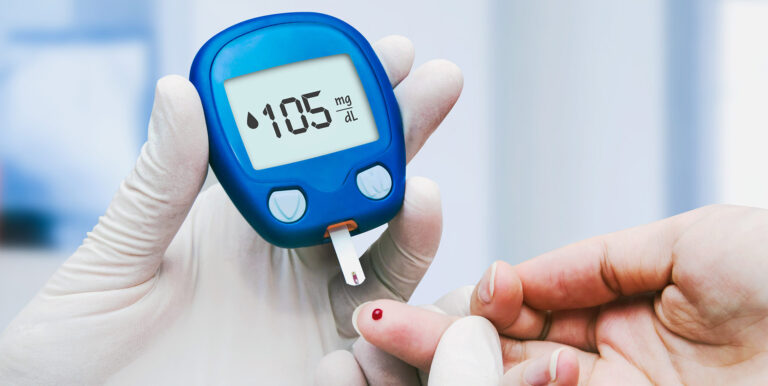Introduction
Human life expectancy has increased very much in the last few decades. This increase is attributed to innovations and advancements in the healthcare system. Yet, not all diseases are curable, especially chronic diseases such as diabetes. So, if you also have diabetes, you should get yourself screened regularly.
Diabetes is a chronic disease that affects the body’s ability to break down food into sugars and provide energy. The pancreas is the affected organ in diabetes; thus, the body is either unable to produce insulin or can’t use it. People who have diabetes face symptoms such as increased thirst, appetite, and urination. Moreover, there is also sudden weight loss and tingling sensation in the limbs. Diabetes can affect almost all parts of the body. Experts suggest you can avoid many diabetes complications through early diagnosis and treatment. So, if you have diabetes, you should visit the doctor frequently and get yourself checked.
Diabetes Tests

Here are the 10 essential diabetes tests to get regularly. A typical diabetic health checkup package includes most or all diabetes tests. Earlier, there was also a urine test for diabetes; now, a blood test is preferred.
HbA1C test:
If you are wondering about the diabetes test name, it is HbA1C or A1C, the primary test for diabetes. The HbA1C test measures the average blood sugar levels over the last 2 or 3 months. This test also gives an insight to the doctor on how well your blood sugar level is maintained. As per the American Diabetes Association (ADA), people with diabetes should get themselves checked for A1C at least twice a year.
While the A1C goal varies for every individual, it should be below or close to 6.5 percent in normal circumstances. If the A1C result is over 6.5 in two successive tests, you have diabetes.
Fasting Blood sugar test:
The fasting blood sugar test sample is taken after an overnight fast. A fasting blood sugar level below 100 mg/dl or 5.6 mmol/L is considered normal. On the other hand, if the results are over 100 and up to 125 mg/dl, it suggests you are highly susceptible to diabetes. Similarly, if it’s over 126 mg/dl, you have diabetes.
Postprandial Glucose Test (PPBS):
It is also a blood sugar test, but it is done to measure the glucose level in the blood. This blood test is specially done after taking a meal. Generally, blood sugar levels increase slightly after a meal. However, in people with diabetes, the pancreas may not discharge insulin to the desired level. This can cause an increase in the blood glucose level resulting in damage to the eyes, kidneys, nerves, and veins.
In a 2-hour PPBS test, the blood sample is taken precisely after 2 hours of a meal. By this time, the blood sugar levels return to normal in healthy individuals but not in diabetic patients. Therefore, this test also gives an insight into whether you are controlling your blood sugar levels or not.
Cholesterol level for diabetes test:
As people with diabetes have a high risk of heart disease, healthcare professionals always suggest a regular cholesterol test. Cholesterol is a waxy molecule present in the blood. Generally, less than 200 mg/dl is considered normal. From 200 to 239 mg/dl is considered moderately risky. The chances of stroke and heart attack increase if your cholesterol level is over 240 mg/dl.
Triglycerides:
It is a kind of fat typically present in the blood. Increased triglycerides level increases the chances of coronary artery disease. Generally, women have a high risk of getting coronary artery disease because of the high levels of triglycerides. The level of triglycerides is usually measured along with a cholesterol test. A result of below 150 means all good; if above 200, there is a high risk of a heart attack and stroke.
Creatinine blood test:
The serum creatinine blood test measures the level of creatinine in the blood. It is a test of kidney function. Creatinine is a waste item produced from creatine during muscular work. The average blood creatinine level is 0.74 to 1.35 mg/dl in adult males and 0.59 to 1.04 mg/dl in adult females.
Electrolyte test:
This blood test measures the main electrolytes present in the body. These electrolytes include sodium, potassium, chloride, and bicarbonate. The test also monitors the symptoms and effectiveness of treatment of heart disease, high BP, liver failure, and kidney disease.
Insulin Autoantibodies (IAA):
The IAA is one of the markers for type 1 diabetes. It is used for detecting the antibodies targeting the insulin hormone. It also detects the attacking beta cells. The normal range for insulin antibodies is less than 95 nU/ml. It means there are no insulin antibodies within this range. If the result is more than 125 ng/ml, you have diabetes.
Eye and Foot exam:
If you have diabetes, you must undergo a yearly eye checkup. It investigates if the increased glucose level has damaged the eye’s blood vessels. In addition, the early treatment of glaucoma, cataracts, and diabetic retinopathy can help protect your vision. Research suggests that half of the people with diabetes will lose the sensation in their feet and lower limbs. So in a foot exam, your doctor will check the reflexes and other signs of risks, such as calluses, sores, or ulcers.
C-peptides:
This test measures how much C-peptide is present in the blood. The C-peptide is measured to know the difference between insulin produced by the body and insulin taken from outside. So, The test is used to see if your body is still producing insulin.
Conclusion

Diabetes is a chronic disease, but you can lead a normal life by changing your lifestyle. Taking these tests can help you live your life to the fullest. No worries if you aren’t sure and wondering how to test for diabetes. You can get tests done through a primary care doctor. But, if the symptoms worsen, it’s recommended to see an endocrinologist.












